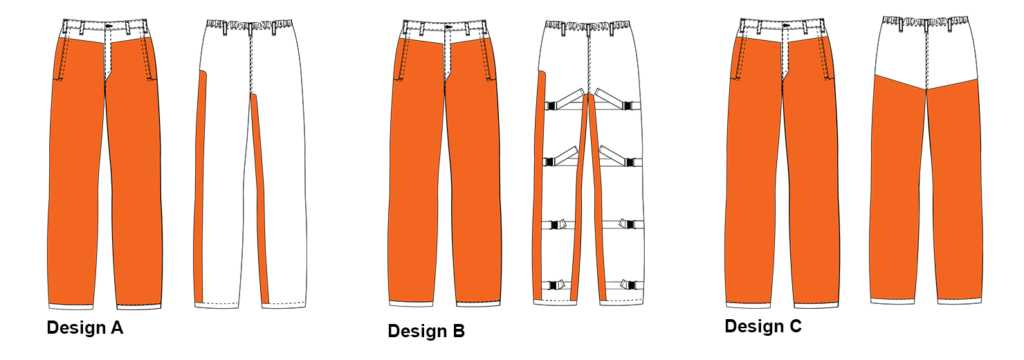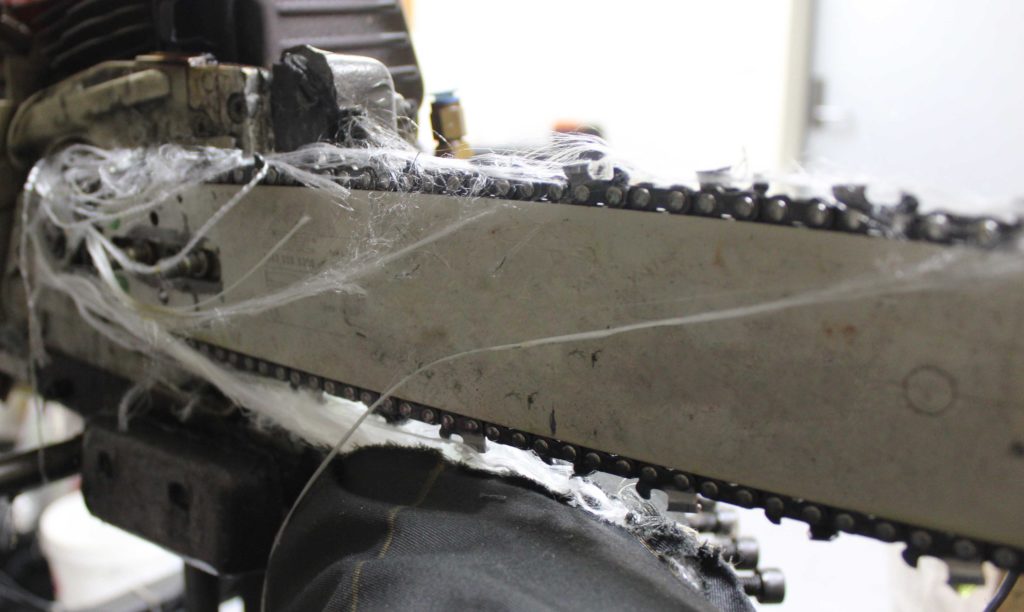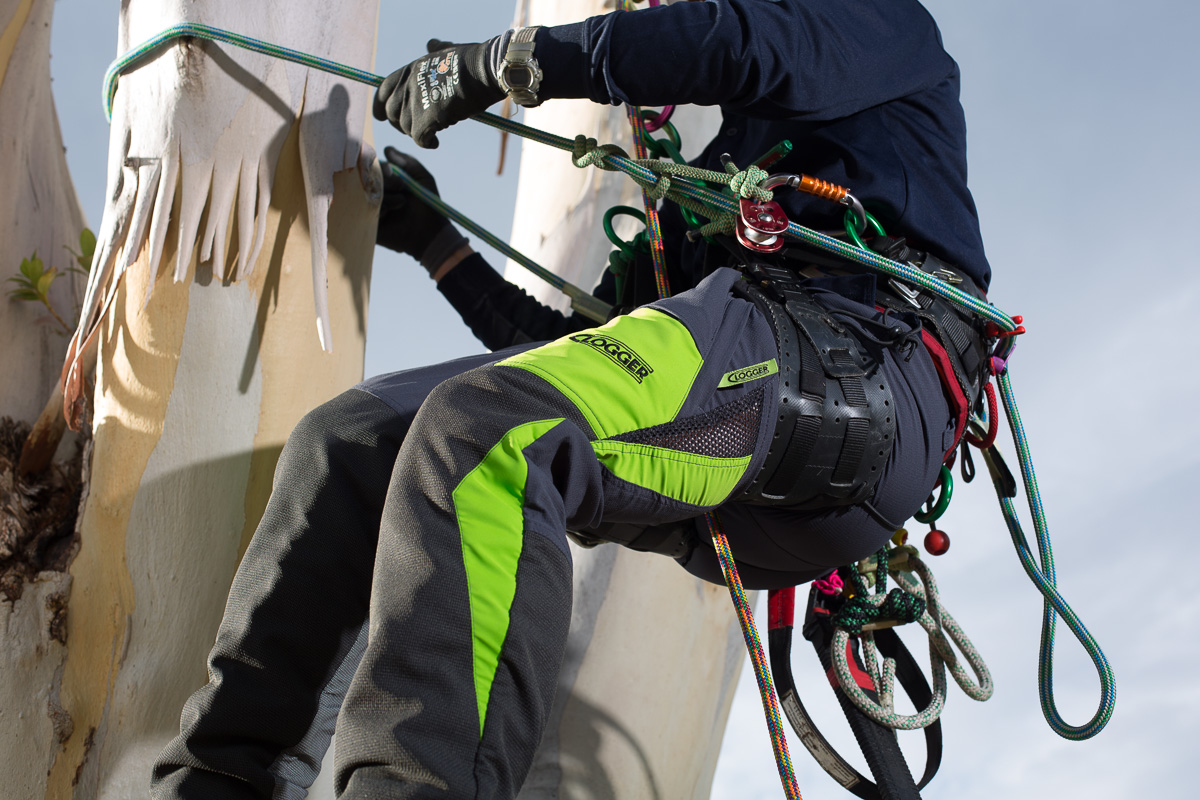There is a lot of confusion about the chainsaw protection standards and how they vary around the world.
Type C, Class 1, chainsaw fabric layers, chainspeed, test methods ….
Understanding the global chainsaw protection standards is becoming increasingly important as arborists explore work opportunities in different countries and as arborist retailers start shipping outside their home country.
We thought that it was time to put a comprehensive guide to chainsaw protection standards together. Grab your popcorn and read on.
1. The Two Main Global Chainsaw Protection Standards
Broadly speaking, all of the current global standards for chainsaw protective legwear can be classified under two headings: European and North American.
- European: currently this is ISO 11393, published in 2018, which replaced EN381
- North American: currently this is ASTM F1897-20
Both of these standards specify the general requirements for design and construction, the protective coverage areas, the performance testing needed, the certification process and the labelling and marking information required.
The Australian/New Zealand standard, AS/NZS 4453 is almost a direct copy of EN381, so for the purposes of this paper it will be grouped under that document. At this stage it hasn’t been updated to reflect the changes incorporated into ISO 11393.
The Canadian standards are related to ASTM F1897-20 and will be discussed as a subset of that standard.
a. The European standard ISO 11393
This standard has several parts to it covering footwear, legwear, hand and upper body protective garments.
Part 1 outlines the construction of the test rig for performing chainsaw cut tests.
Part 2 outlines the test methods and the performance requirements for leg protectors.
Note
EN 351 has been superceded by EN ISO 11393 effective 19 November 2021. The main change is the replacement of Design B with a new chap design. Chainsaw chaps were not previously included in the standard. Garments certified to EN 381 are still able to be used up to the expiry of their certificate (5 years after the certification date). We will be making additional updates to this post to reflect this and other changes introduced by EN ISO 11393.
The main differences between ISO 11393 and the Australian/New Zealand standard, AS/NZS4453.3 are:
- ISO 11393 includes 3 different classes of chainspeed testing; Class 1 at 20 m/s, Class 2 at 24 m/s and Class 3 at 28 m/s. AS/NZS4453.3 only has one level of chainspeed testing which is 20 m/s.
- ISO 11393 outlines the coverage areas for three different designs of leg protectors: Design A trousers – frontal protection; Design B chaps – frontal protection and Design C trousers – frontal and rear protection. AS/NZS4453 has adopted Design A only for the trouser style with one very minor modification and its chaps design is similar to Design B. These options for design will be looked at closely later.

b. The North American standard ASTM F1897 – 20
This standard outlines the performance requirements for leg protection, while the test methods for testing to this standard are given in ASTM F1414.
c. Comparison of the requirements and the test methods for both of these standards.
The requirements and the test methods employed by both standards are given in the table below. While these differences may appear insignificant, the two standards produce completely different results and the meaning of the results are not comparable, consequently, there is no direct correlation between them.
i. Requirements
| ISO 11393 Parts 1 & 2 | ASTM F1897-20 & F1414 | |
| Various tests required | • Dimensional change (shrinkage) • Chainsaw cut testing • Protective area checking • Attachment strength of chainsaw pad to garment • Innocuousness • Ergonomics | Chainsaw cut testing |
| Preconditioning of test samples | 5 times specified washing and drying procedure | 5 times specified washing and drying procedure |
| Requirements for dimensional change | Less than 6% for both length and width | No requirement |
| Requirements for protective area | Trousers Design A: covers from 20 cm above crotch to 5 cm above hem with an extra 5 cm of protection wrapping around on the left side of each leg. Chaps Design B: as for trousers Design A. Trousers Design C: Front protection from 20 cm above the crotch to 5 cm above the hem with rear protection from 5 cm below the crotch to 5 cm above the hem. | Pants/Trousers: a minimum length of 700 mm (28”) covering from the crotch to 7.5 cm (3”) above the hem with an extra 0.524 rad (30°) or 100mm (4”) wrapping around to the left of each leg. (Note that 30° equates to approx 6 cm at the top of the thigh.) Chaps: a minimum length of 700 mm (28”) covering from the crotch to 25 mm (1”) above the carrier garment. Minimum width of 350 mm (14”) at the midpoint of the pad and 250mm (10”) at the bottom of the pad. |
| Requirements for fastenings for chaps | Minimum of 4 straps with a maximum distance of 200mm between straps. One strap must be at the top of thigh and another must be at the bottom of hem. | No specification for number of straps or placement |
| Requirements for pad attachment strength | 150N force | No requirement |
ii. Testing Methods

| ISO 11393 | ASTM F1897-20 & F1414 | |
| Drive unit for test rig | Electrically powered motor with a clutch and flywheel of specified inertia | Standard gasoline powered chainsaw with standard clutch mechanism. |
| Performed on | Actual garments | Rectangular pads made up in the materials intended to be used. Calibration pads are specified as 200mm x 700mm however actual test pads are accepted in varying dimensions. |
| Number of tests | 6 cuts, 3 on each leg for Design A and B 2 cuts on each leg on both front and rear for Design C. | 24 cuts on test pads. |
| Angle and position of cut tests | All cuts after preconditioning are made at 45° in the knee area with the chain moving upwards from left to right of the leg. | Cuts are made in the centre of the test pads consisting of: • 6 cuts without preconditioning at 45° • 6 cuts without preconditioning at 90° • 6 cuts after preconditioning at 45° • 6 cuts after preconditioning at 90° |
| Status of power at point of release | Power released | Power remains on |
| Height above pad at point of release | 3mm | 50mm (2”) |
| Distance from point of contact to centre of drive sprocket | 130mm | 130mm |
| Downward force at point of contact | 15N | 15N |
| Chain type | 8mm, 0.325” pitch | 10mm, 0.375” pitch |
| Drive sprocket | 7 tooth | 7 tooth |
| Method of fixing of test specimen | A row of spikes 30mm apart penetrate the specimen for a length of 800mm on the opposite side of the specimen from the drive unit. The spikes are omitted for a distance of 60 mm each side of the contact point. Masses of 250g every 100mm are used to hold specimen in place over the specimen holder. | 2 plates 75mm x 25mm with centre lines 290mm apart are clamped up tight on to specimen. Clamps are on the opposite side of specimen from drive unit. No mass is used to pull pad taut over the specimen holder. |
| Chainspeed requirement | • 20 m/s • 24 m/s • 28 m/s | 2750 ft/min |
| Reporting method | Pass or fail at the nominated chainspeed. Cut-through is deemed to be if there is any damage to the innermost layer (lining) of the garment. | All 24 pads tested must show no cut-through at this chainspeed. Cut-through is deemed to be any cut in the lining fabric. |
Important considerations of these comparisons.
- Both standards report the results of cut-testing simply as a pass/fail to the nominated level of chainspeed, therefore no indication is given of the margin of safety that exists of a particular garment above that minimum level. Under the F1897-20 standard, Underwriters Laboratory, who are the certifying body, used to be able to perform a ‘CS50’ test which determined the point at which cut-through was likely to occur. This was useful as it gave a means of comparing the performance level of different garments, however UL have decided to cease doing this type of testing.
- Certification of a garment by a certifying body means that the garment is certified, or has a third party verification, that it will pass at the minimum level as specified in the standard. The certification process involves auditing of a manufacturer’s production processes to ensure that each garment will meet the standard.
- There are multiple significant differences between the test methods of ISO 11393 and ASTM F1897-20. These include:
- The status of the power at point of release.
- The release height above the test specimen.
- The method of fixing the specimen to the holder.
- The size of chain and angle of cuts.
- All of these mean that there is no correlation between the two standards. Simply converting m/s to ft/min mathematically to compare performance should not be done as it is highly misleading.
- The European standard cut testing is performed on an actual garment, although the garment is prevented from rotating on the specimen holder by means of the spikes. The ASTM standard cut tests are performed on test pads which are only representative of the final product.
- There are no tests performed to determine how well the protective pad is held in place in the carrier garment with the ASTM F1897-20 standard, whereas the European standard does have a strength test for this.
The Canadian standard ASTM F3325.
ASTM F3325 is the current standard for Canada excluding BC and gives the performance requirements. While it is virtually a copy-and-paste from ASTM F1897-20, it does include some other options for the design of garments. ASTM F3324 gives the test methods for F3325 and apart from some minor differences it is identical to ASTM F1414, so testing performed is interchangeable between standards.
Importantly, ASTM F3325 replaced the withdrawn standard BNQ 1923. This change established a much-needed alignment between the Canadian and USA standards. Both countries’ standards now share the same test methods, certification processes, marking and labelling requirements.
This will make it easier for companies who carry out work on both sides of the border as the same garment will more likely be able to be certified to both standards. However, note that there is still a chainspeed difference.
The table below gives an outline of the main differences for the requirements of leg protectors for ASTM F3325 and F1897-20:
| ASTM F3325 (Current) | BNQ 1923 (Withdrawn) | |
| Coverage area for pants and chaps | 4 coverage area options: • Category A: front protection plus rear calf protection • Category B: front protection only • Category C: front protection plus extensions to the left of both legs • Category D: same as for ‘C’ but with rear protection as well | At front: from crotch level to 7.5cm above the hem. At rear: from below knee to 7.5cm above hem, (no minimum length given) |
| Fastenings for chaps | States that straps must be permanently attached. Certain placement positions are specified. | States that there must be adequate means of holding the garment securely around the leg. There is no specification for placement. |
| Chainspeed for cut testing | 3000 ft/min | 2750 ft/min |
The not-able-to-test-even-if-you-want-to standard for BC, Canada.
The Canadian standard, Worksafe BC Schedule 8-A, section 8.21 has been adapted from the original WCB (Workers Compensation Board) standard PPE 1 – 1997.
At that time there was a test rig commissioned to test to this standard based in BC, which was similar to the test rig described in ASTM F1414, but with one notable difference, namely the specimen holder was free to rotate around its axis. This meant that the chain engaged with fresh protective fabric as it rotated when under test, whereas with ASTM F1414 the chain digs deeper into the same place, because it is not free to rotate.
Consequently, the ASTM F1414 test method is considerably more rigorous.
This Worksafe BC standard is similar to ASTM F3325, however, it only allows for one design of garment which is the equivalent of Category C.
This BC test rig was decommissioned some years ago when the owner/operator died and the rig was sold to a legwear manufacturer. It is no longer available for public use. It is not possible to test to this standard any longer.
This Worksafe BC standard is similar to the old Canadian standard BNQ 1923, however, it only allows for one design of garment which is the equivalent of Category C.
Unusually, it allows for four different ways of complying with the cut test requirements:
- Achieving a threshold chainspeed of 3600 ft/min when tested using the test rig for WCB PPE 1 – 1997
- Achieving a threshold chainspeed of 3300 ft/min when tested according to ASTM F1414.
- Meeting EN381-5 at the chainspeed level of 24 m/s
- Meeting ISO 11393-2 (same as EN381-5) at the chainspeed level of 24 m/s.
It is to be noted that chainsaw operators and companies in BC generally refer to the minimum chainspeed needed to comply as 3600 ft/min. What is not understood is that this speed has reference to a test method that is no longer available.
The applicable test speed for the Worksafe BC standard is 3300 ft/min when tested according to ASTM F1414.
Conclusion
In summary, there are very significant differences between chainsaw protection standards globally and the results obtained using one test method cannot be translated over to the other.
The common theme in these different test methods is that they are designed to create a benchmark test by which different manufacturer’s product can be compared.
While neither are perfect, both the European and the North American standards are designed to outline a minimum performance level for leg protectors with the object of protecting chainsaw users from the horrific injuries that are the result of a chainsaw accident.


very interesting seeing the comparison
thank you
Very interesting, could you send me a copy please?
Hi Greg. You can download a copy of this post at the top of the page. Thanks for your message.
Lincoln,
Is this ok for me reference your materials for our teaching purposed only
Hi Allen. No problem. Please get in touch if you need any additional materials. We work with a number of schools, educators and trainers.
Does clogger make any gear that meets the highest 28ms testing? I only do felling and cross cutting firewood the saws I run are from 60 to 93cc thanks
Sorry about the delay. We make product to meet the requirements of our current markets. There is no requirement or way to get certified to 28 m/s in our current markets.
Good explanation and comparison.
Can we use this in our training manuals?
Sure. We have some additional training materials also if you are interested.
Nice summary. One grammatical issue: A “Crutch” is usually positioned at the arm pit when a leg is injured for assistance in moving. A “crotch”, on the other hand (in the context of chaps and leg protection) is at the point where both legs come together at the hips. For the sake of accuracy a global search for “crutch” and replace with “crotch” would be helpful. 😉
Good point! Fixed now.
is there a diffrence between ASTM F 1897-20 and just ASTM F 1897
Thanks
The difference is very, very minor and only relates to the pre-conditioning that happens prior to being tested.